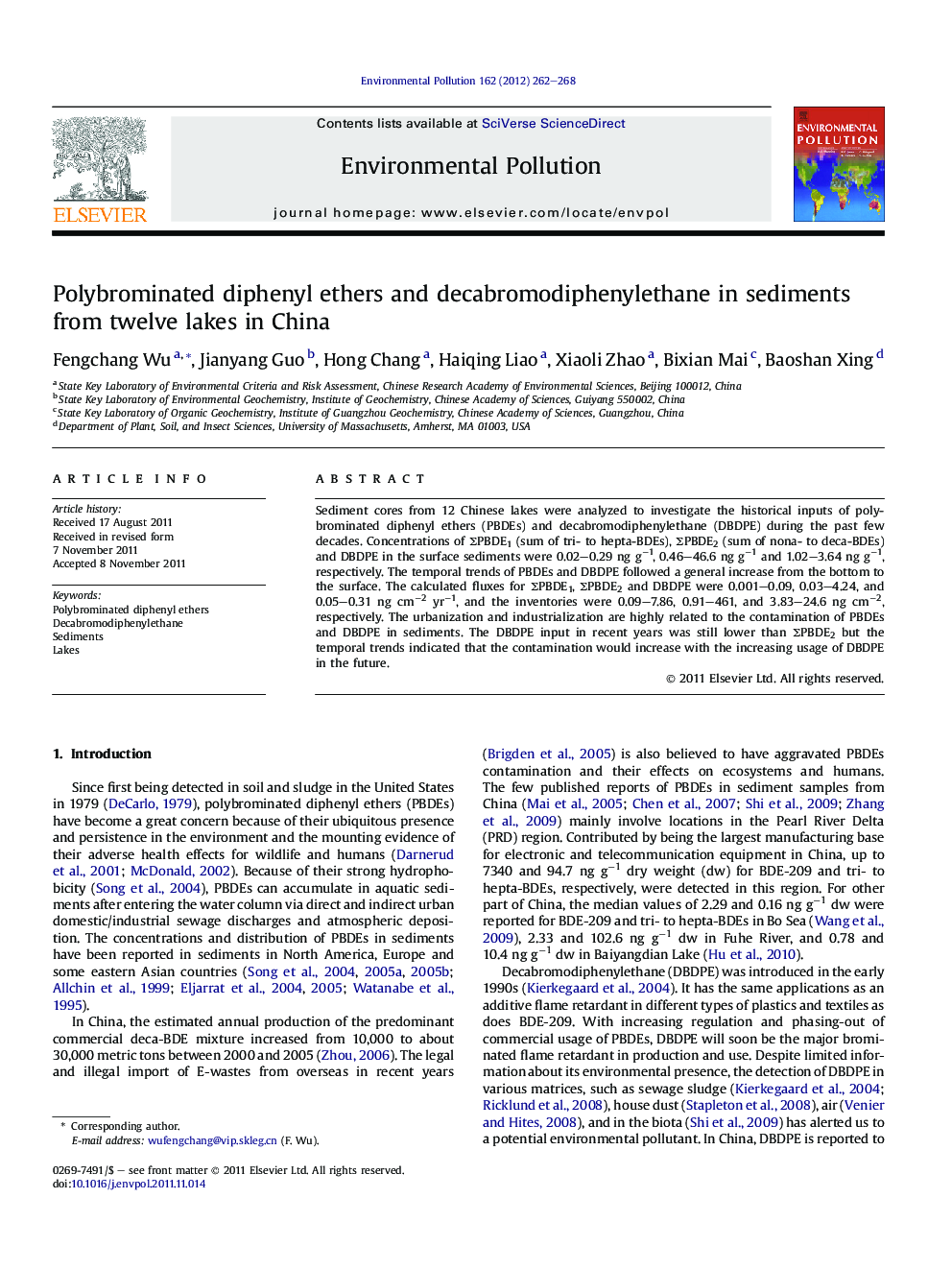| Article ID | Journal | Published Year | Pages | File Type |
|---|---|---|---|---|
| 4424980 | Environmental Pollution | 2012 | 7 Pages |
Sediment cores from 12 Chinese lakes were analyzed to investigate the historical inputs of polybrominated diphenyl ethers (PBDEs) and decabromodiphenylethane (DBDPE) during the past few decades. Concentrations of ΣPBDE1 (sum of tri- to hepta-BDEs), ΣPBDE2 (sum of nona- to deca-BDEs) and DBDPE in the surface sediments were 0.02–0.29 ng g−1, 0.46–46.6 ng g−1 and 1.02–3.64 ng g−1, respectively. The temporal trends of PBDEs and DBDPE followed a general increase from the bottom to the surface. The calculated fluxes for ΣPBDE1, ΣPBDE2 and DBDPE were 0.001–0.09, 0.03–4.24, and 0.05–0.31 ng cm−2 yr−1, and the inventories were 0.09–7.86, 0.91–461, and 3.83–24.6 ng cm−2, respectively. The urbanization and industrialization are highly related to the contamination of PBDEs and DBDPE in sediments. The DBDPE input in recent years was still lower than ΣPBDE2 but the temporal trends indicated that the contamination would increase with the increasing usage of DBDPE in the future.
► We revealed the history input of PBDEs and DBDPE into 12 lakes, including lakes from remote areas of China. ► High levels of PBDEs were found in the eastern and southwestern lakes. ► High DBDPE/BDE-209 ratios were found in sediments from the eastern lakes.
